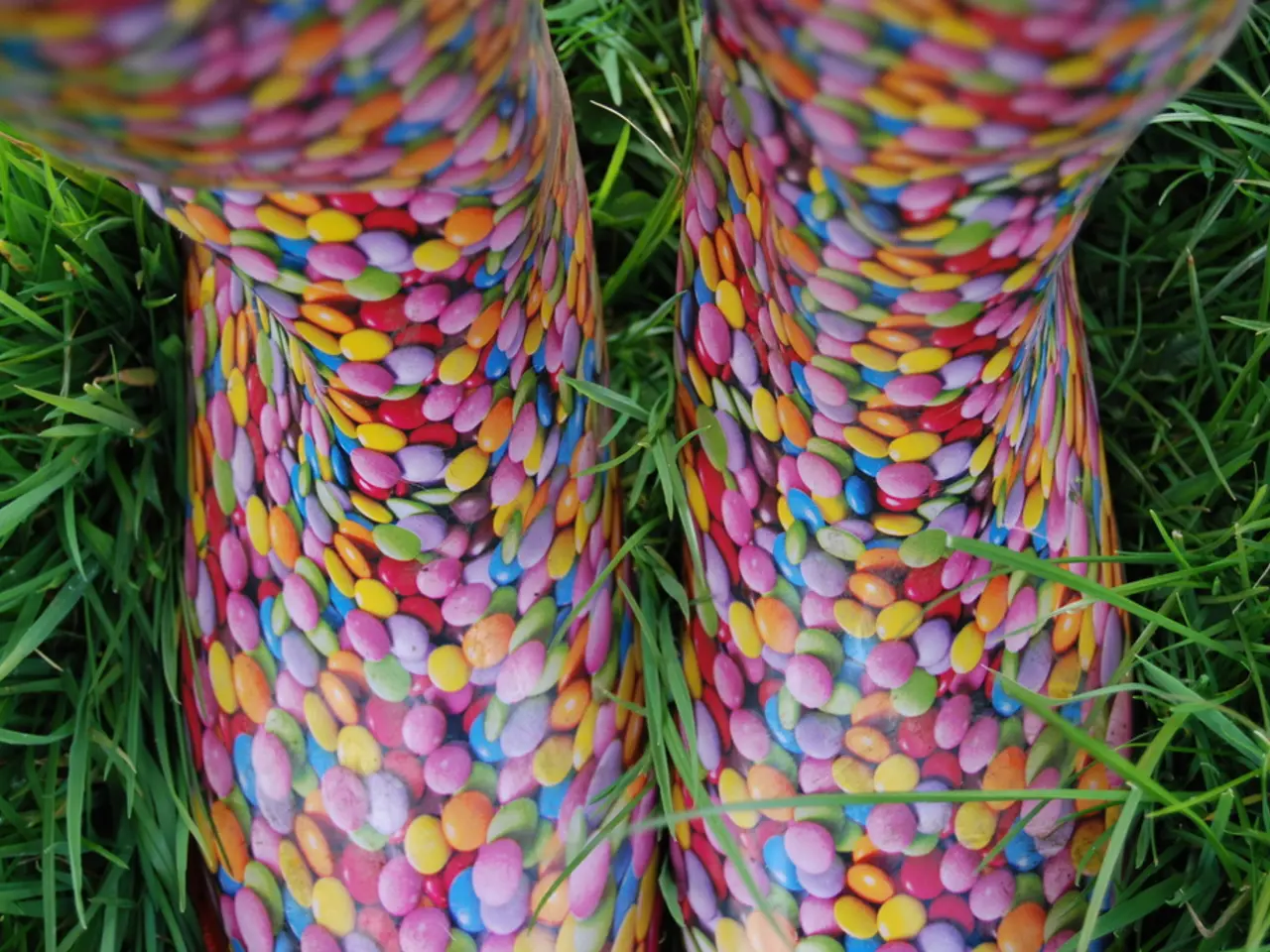Amethyst's cousin in the mineral world: Citrine, known for its sunny hue and healing powers
Citrine, a captivating variety of quartz, has long been a source of fascination and intrigue for many. With its vibrant yellow, orange, and red hues, this gemstone has graced the jewelry collections of ancient civilizations and continues to enchant us today.
Cultural Significance
Tracing its roots back to ancient times, Citrine has been a cherished gemstone in various cultures. The Egyptians, Greeks, and Romans all held Citrine in high regard, valuing it for its calming effects and ability to manifest desires [1][3]. In modern times, Citrine is often referred to as the "Merchant's Stone" or "Success Stone," believed to bring prosperity and good fortune [1][3].
Historical Use in Jewelry
Citrine made its mark in the world of jewelry during the 1st century A.D., with Greek and Roman civilizations featuring it in their creations. Notable pieces include the flamingo brooch of the Duchess of Windsor and the Bulgari Cerchi earrings [1].
Etymology and Origin
The name "citrine" comes from the Latin word "citrina," meaning yellow, which is also related to the word "citron," the fruit [3]. Citrine is found in various locations around the world, such as Brazil, Madagascar, Russia, and the United States. However, most commercial citrines are heat-treated amethysts or smoky quartzes because natural citrines are rare [1][3].
Myths and Misconceptions
While Citrine is often associated with wealth and healing, it's essential to approach these claims with a critical eye. For instance, while Citrine is believed to attract financial success in Feng Shui, it should not be considered a guaranteed path to riches [3]. Similarly, while some believe that Citrine can heal physical ailments, these claims are not backed by scientific evidence [3].
Ethical Sourcing and Care
When purchasing Citrine, it's crucial to ensure that the gemstones are authentic and ethically sourced. This is particularly important for businesses interested in B2B buying of Citrine in high volume [2]. It's also essential to care for your Citrine jewelry properly, avoiding prolonged exposure to strong heat, harsh chemicals, and sunlight [3].
Symbolism and Benefits
Citrine carries a wealth of symbolism across various cultures and societies, often associated with prosperity and abundance in Western traditions [3]. Wearing Citrine is believed to bring a range of benefits, both emotional and physical, such as increased creativity, enhanced concentration, and a boost in self-confidence [3].
In Eastern philosophies, Citrine is often worn on the index finger to activate the solar plexus chakra, empowering you to take action and make your dreams a reality [3]. The vibrant colors of Citrine are believed to create a harmonious flow of positive energy, balancing the environment and promoting a sense of well-being [3].
The Future of Citrine
Today, Citrine is experiencing a resurgence in popularity, with one-of-a-kind Citrine engagement rings gaining traction as a unique and meaningful alternative to traditional diamond rings [4]. The versatility of Citrine is being showcased in various styles and designs, from minimalist Citrine stud earrings to elaborate Citrine-encrusted necklaces [4].
Whether you're drawn to Citrine for its healing properties or its aesthetic appeal, there's no denying that this gemstone captivates and enchants. Citrine offers something for everyone, enhancing jewelry collections and enriching lives in countless ways [5].
[1] "Citrine: The Merchant's Stone." GIA. Accessed May 25, 2023. https://www.gia.edu/citrine
[2] "Ethical Sourcing of Citrine." Responsible Jewellery Council. Accessed May 25, 2023. https://www.responsiblejewellery.com/en/sustainability/ethical-sourcing/citrine
[3] "Citrine: Meaning, Properties and Uses." Crystal Vaults. Accessed May 25, 2023. https://www.crystalvaults.com/crystal-encyclopedia/citrine
[4] "Citrine: A Modern Gemstone for Contemporary Jewelry." American Gem Society. Accessed May 25, 2023. https://www.americangemsociety.org/blog/citrine-a-modern-gemstone-for-contemporary-jewelry
[5] "The Allure of Citrine." Citrine Allure. Accessed May 25, 2023. https://www.citrineallure.com/the-allure-of-citrine
- To ensure authentic and ethically sourced Citrine in health-and-wellness or fitness-and-exercise products, companies must prioritize ethical sourcing practices, akin to the Responsible Jewellery Council's guidelines for B2B buying.
- The benefits of Citrine, such as boosting mental health, creativity, and self-confidence, can extend beyond jewelry, making it a valuable ingredient in skin-care products and nutritional supplements.
- The rise in popularity of Citrine jewelry has opened doors to innovative applications in science and technology, with potential advancements in areas like optics, health technology, and even renewable energy, thanks to the gemstone's unique properties and vibrant colors.




